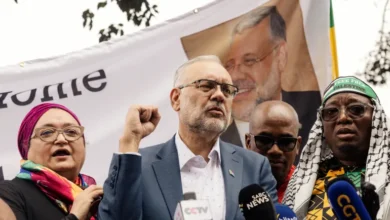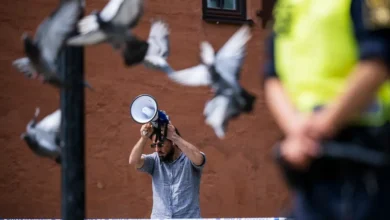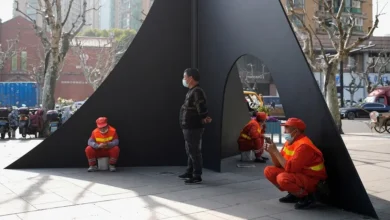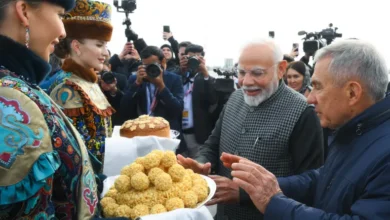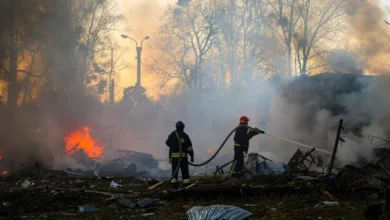We must ‘rehumanise ourselves’: Palestinian artist Sliman Mansour
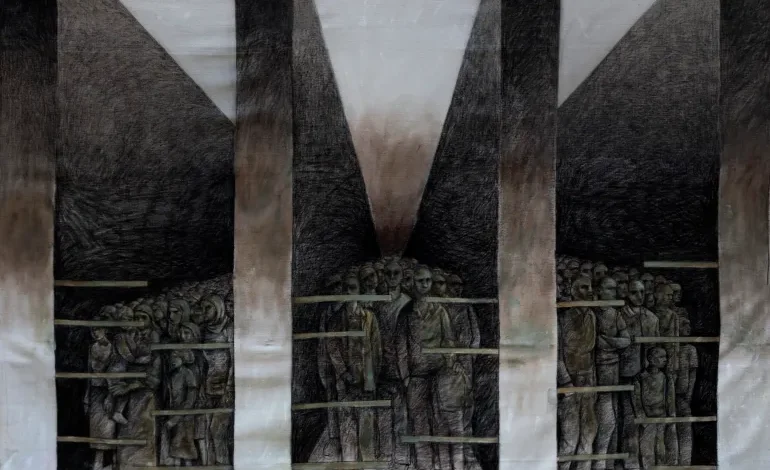
I first encountered Sliman Mansour, whose paintings portray the daily and historical struggles of the Palestinian people, last year at Art Cairo in the pharaonic enormity of the Grand Egyptian Museum. The event brought together some of the most acclaimed painters, photographers, graffiti artists, and other creatives from across the Middle East. Mansour, who has famously helped to shape the contemporary art of Palestine for over half a century, was participating in a discussion about censorship and violence against artists and journalists.
At that time, Mansour’s panel was considering the issue of future attacks on artists through the lens of those that had already occurred. Initially soft-spoken, his tone became fiery in response to another panellist who suggested that artists should toe the line in response to governmental censorship because one could not produce art if imprisoned or dead. This was unacceptable to Mansour, who asserted that it was the job of the artist to create art honestly regardless of the consequences.
When I spoke with Mansour almost exactly one year later in January 2024, for Palestinians the matter was once again no longer historical or hypothetical, but all too present: The number of journalists and artists killed was continuing to skyrocket amid the latest eruption of violence.
“I’m sad and angry,” Mansour told me when I asked him about the high rate of journalist casualties. “But it fits the thinking of the Israelis. For them, the narrative is very important. And who tells the narrative — it should be them only, because that’s the truth for them. Anybody who speaks another narrative should be put in prison. Or now they are killed.”
Mansour spoke with me via Zoom from his home in Jerusalem, with the end to the violence nowhere in sight. He smiled amicably throughout our talk, but his eyes were sad and he seemed somewhat tired.
When I asked him about the atmosphere in Jerusalem, he considered the question for a few long moments, then shrugged. “It’s very tense,” he said, “but there’s no physical threat [in Jerusalem]. It’s only tense because of the war and so on.”
That “and so on” was doing a lot of heavy lifting.
A lifetime of artistic resistance
Seventy-seven-year-old Sliman Mansour has spent half a century expressing the perseverance and resistance of the Palestinians through his painting. Born in rural Birzeit before spending his formative years in Bethlehem and Jerusalem, his youth was marked by what he saw as the active erasure of Palestinian identity; various elements of Palestinian culture, such as the flag and even its colours, were repressed or outright banned. In 1973 he co-founded the League of Palestinian Artists, which brought a new sense of political urgency to the art of Palestine. Since then his singular style — which fuses elements of realism, abstract expressionism, and Surrealism — has given rise to some of the most powerfully emotive images to emerge from the movement’s cultural opposition to oppression.
Mansour’s most recognisable works speak directly to the plight of Palestinians. In Rituals Under Occupation, a sea of forlorn people carry a cross, the pillar of which is a Palestinian flag that stretches off into the horizon. In Perseverance and Hope, a trio in traditional Palestinian dress looks up at a dove, their hands bound behind their backs, the backdrop a collage of terrible calamity. And of course, there’s Camel of Hardship, one of Mansour’s earliest works to find widespread acclaim, which portrays a man staggering forward with the burden of Jerusalem on his back.
The persistence of ‘sumud’
There is an almost pastoral stoicism to Mansour’s work that implores contemplation rather than cries out for attention. These paintings are some of the most internationally recognised works to present a concept known as sumud, a Palestinian concept that has also been captured by artists and writers such as Ismail Shammouth, Mahmoud Darwish, Issam Badr and many others.
“The meaning of it in English is steadfastness,” explained Mansour. “For me, sumud is to not forget who we are and to fight all the time for our liberation. Not to give in to the demands of Israel — that if we want to live in this land, we have to live like a second-class people. That is mainly what Israel wants of us — to accept that they are the rulers of this land. Sumud, for me, means that I don’t agree with that. And I will fight that. That — in short — is the meaning of sumud.”
And in the case of Mansour’s art, that fight is characterised by existence rather than violence. His painting, Memory of Places, for example, shows a man dressed in traditional Palestinian garb standing before a painting of an olive grove. The destruction of Palestinian olive groves on the part of Israeli settlers has been a fierce point of contention in recent years, and Mansour’s meta-portrayal of such a grove — which we presume has been destroyed, for the old man is standing before a painting rather than actual trees — insists that the view consider the obliteration of Palestinian identity.
“A painting shouldn’t be full of force and bloody violence. If I paint just a beautiful landscape or people working in the field, it’s part of the sumud thinking.”
Red, green, black, and white
In the 1980s, Mansour was among the artists who began using what is today a well-known symbol of the Palestinian movement — the watermelon — after Israel passed legislation censoring political art.
“They gave us rules like that we should not paint in certain colours,” said Mansour. “That we should not paint in red, green, black, and white. This rule was published in newspapers and everywhere, including in Israel.”
According to Mansour, when Israeli authorities asserted the colour ban, painter Issam Badr asked if the colours could still be used to paint flowers. No, said an officer, flowers were forbidden. Nothing in red, green, and black. Not even a watermelon.
“They wanted to fight the notion of a Palestinian identity,” explained Mansour. “Because our existence here, for them, is ‘antisemitic’. That we exist, only. It’s not what we do — just our existence here is something that they hate. It does not fit their narrative about Israel. What are these people doing here? We came to a land that should be empty. So our existence here is something that makes them angry. Existence as workers — that we work for them in the fields or in factories and so on — that’s okay. But existence, existence as a national identity, as Palestinians — that’s what makes them mad.
“And that’s the reason they forbid us to paint in these colours. Because these colours are the colours of the Palestinian flag and the flag is a symbol of the people.”
Because the colours of a watermelon tested the bounds of the ban, it became a symbol of resistance among artists and is now commonly displayed at pro-Palestinian protests and by supporters online.
